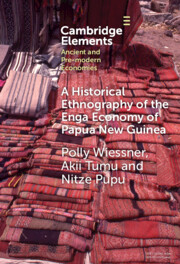Element contents
A Historical Ethnography of the Enga Economy of Papua New Guinea
Published online by Cambridge University Press: 31 May 2024
Summary
Keywords
- Type
- Element
- Information
- Online ISBN: 9781009368773Publisher: Cambridge University PressPrint publication: 20 June 2024



